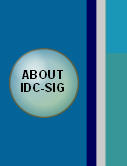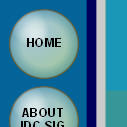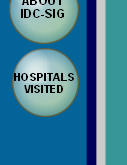.gif)
.gif)

|
Imaging in Developing Countries |
|
Special Interest Group |











|
The Gorodi was built to allow traffic (originally horse and bullock drawn carts) to reach the mission station and hospital at Livingstonia. The road is approximately 15km long and rises 1000metres. There are 21 hairpin bends and it is mainly constructed from earth and stone. John Challis is engaged in a project to refurbish the road to improve its surface and prevent it being washed away in the rainy season. |
|
The Gorodi is not an experience that you forget and I was amazed that the X-ray equipment had travelled this way to the hospital. Eventually we reached the top and arrived at Livingstonia. The settlement was originally moved from the lake shore in Victorian times in order to get away from the mosquitoes and the associated malaria problem. It is also cooler than it is at the lake. The settlement has schools, hospital and a university as well as houses for the staff and others. We were taken to meet several members of the hospital staff and then shown to our room in the doctor’s house. The Doctor’s house was built by Dr Robert Laws in the early 20th century and is a wonderful old house of brick and timber. |
|
The hospital is one of the oldest if not the oldest in that part of Africa and is built mainly from local brick and has tin roofs on all of its buildings and walkways. The X-ray department is part of a new build project at the hospital. The new building known as the Macnair Institute was built recently by local labour and project managed by John Challis of the Raven Trust. It also contains a laboratory and other facilities as well as the X-ray department and the dark room. |
|
The X-ray equipment had been shipped from the UK and re installed in a purpose built room. Radiation protection has been provided in the construction and the room has lead lined doors. In addition a new three phase supply had also been provided for the equipment. As far as I know the equipment is the only ceiling suspended X-ray unit in the charity hospitals in Malawi and the building had had to be specially constructed to accommodate it. No mean feat for the team as they had no prior knowledge of how it should be done. I was pleased to see that the room and the equipment were almost ready for use. |
|
The equipment would switch on and go through its switch on test routine but when this had finished the console showed an error code. I had this information before I left the UK and with the photographs I also had, I was able to talk through the possible causes of the problem with my retired Siemens colleague. Within a short time we had found the problem. A cable had not been connected which feeds the motor in the X-ray tube. The cable was duly connected and the equipment switched on again. This time the error codes had gone and the equipment was working. As with all things, it’s easy when you have experience and a great deal of advice from others. |
|
Following our success we decided to make sure that the equipment was producing X-rays. As there was no test equipment available, as there would be in the UK, we resorted to the old fashioned and simple method. Normally this would be a simple exposure of a suitable item, car keys or tools. The film would be developed and checked. The darkroom had been set up but unfortunately there was no X-ray film available. It had been ordered and was expected soon. We blacked out the X-ray room and exposed a piece of fluorescent screen from the inside of an X-ray film cassette. A healthy blue glow brought much relief to us all as the equipment appeared to be working. |
|
We spent several hours tidying up cables and making some alterations in order to get the best use from the equipment. Eventually some film arrived and we tried the first film on the new equipment. During our trip from Mzuzu we had stopped as I mentioned earlier at the bottom of the Gorodi for a rest and a drink. Whilst there the local butcher had given us the leg from a goat deftly removed with an axe. These bones were used to provide our first film. We then spent the remainder of the time at Livingstonia tidying the equipment and sorting out some other minor electrical problems. |
|
Whilst I was at Livingstonia it is customary for anyone new to be introduced at the Wednesday morning meeting / service in the hospitals chapel / meeting room. This turned out to be quite a pleasant experience. The service and singing is done in the local language and my introduction was translated. The staff were very welcoming and you realise why Malawi is known as the “Warm Heart of Africa”. |
|
Time to move on again, this time back to Mzuzu via the Gorodi and the M1. We arrived back late in the evening just in time to eat, chat and off to bed. The following morning we drove to Ekwendeni hospital in the Raven Trusts pickup truck. Ekwendeni hospital is about 10km from Mzuzu and is where the original equipment I had tried to repair by email is located. I was introduced to the maintenance manager and the hospital electrician and then taken to the X-ray department. As I had spent so much time looking at the photographs and drawings of the equipment it was like meeting an old friend. However the equipment didn’t work and would not switch on without blowing a fuse. |
.gif)